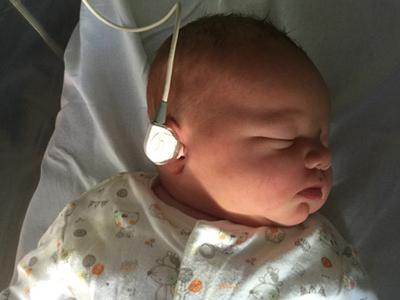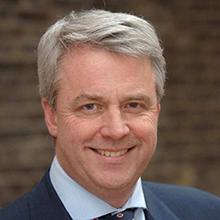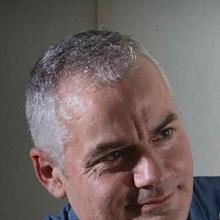Improved child hearing tests for the best start in life

Key details of this case study:
Summary: Permanent childhood hearing impairment (PCHI) affects more than one in 1,000 babies. We helped developing a method to be a more accurate identifier using low level sounds that are emitted by the ear. This technique has been used on more than four million babies between 2008 and 2013 in England alone.
Status: Ongoing
Key staff: Dr Stefan Bleeck; Dr Ben Lineton; Dr Steven Bell

Thanks to the NHS [new-born hearing screening] babies born with a hearing impairment can now be identified much earlier. This allows babies with hearing problems to receive the support they need earlier to give them the best possible start in life.
Explore this case study:
The challenge
Permanent childhood hearing impairment (PCHI) affects more than one in 1,000 babies. It can have adverse effects on a child’s neuronal development, language acquisition and educational outcomes. These effects can harm an individual’s emotional wellbeing and employment opportunities later in life, with further negative consequences for the UK economy and society.
What we did
We trialled what we believed to be a more accurate identifier: Ears with no impairment emit low level sounds called transient evoked otoacoustic emissions (TEOAEs), which can be detected by a microphone in the ear canal, and are usually measurable within the first few days after birth. We also contributed to the only controlled trial comparing universal screening based on TEOAEs with a newly developed test.
The Wessex Trial (1993-1996) was conducted by a collaborative group comprising the ISVR, the Faculty of Medicine, and the Medical Research Council’s Institute of Hearing Research. Around 25,000 new-born babies were screened using TEOAEs. Outcomes were then compared with those in a control group. The results strongly suggested a worthwhile benefit of a universal Newborn Hearing Screening Programme (NHSP) based on TEOAEs in terms of age of detection, test accuracy and cost.
The results of another large trial to estimate the field sensitivity of TEOAEs screening were published and received the Editor’s prize for outstanding research.
Our impact
In England alone more than four million babies were screened between 2008 and 2013, with around 6,000 identified as having hearing impairments. Earlier clinical intervention has benefited children’s language development and overall quality of life.
The facilities we used
We used the University's Audiology Clinic and Hearing and Balance Centre.
Partners we worked with
This research project was an interdisciplinary collaboration between Engineering and Medicine within the University. We also worked closely with the University's Institute of Sound and Vibration (ISVR).
We worked closely with the Medical Research Council’s Institute of Hearing Research.
Related Staff Member
Related Staff Member
Related Staff Member
The following PhD student also played a significant part in this research project:
- Michael Chesnaye
Other University of Southampton sites
Links to external websites
The University cannot accept responsibility for external websites.
You might also be interested in
Human Sciences Research Group
The HFRU is a multidisciplinary unit conducting fundamental and applied research, providing training, and offering advice in all matters related to human responses to vibration.
Other Healthcare and Medicine case studies
Learn more about the research we are undertaking in these areas.
Postgraduate opportunities
Explore our postgraduate research degrees
Media enquiries
Make a media enquiry about this case study


